Books, videos, hands-on projects, experiments, lesson plans and much more on Earth’s one and only moon – plus moon cookies, moon poems, a moon hoax, and instructions for building a spaceship.
Also see Astronomy.
Table of Contents
BLUE MOONS
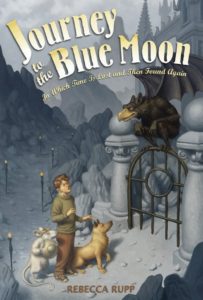
|
In Rebecca Rupp’s Journey to the Blue Moon (Candlewick, 2006), 11-year-old Alex has lost a family heirloom pocket watch – and finds that without it, time is disastrously slipping through his fingers. A chance encounter with a mysterious lady at the library sends Alex and his dog, Zeke, to the Blue Moon – where all lost things end up, from misplaced homework to lost hopes, dreams, and tempers – in company with a manic crew of scavenging Moon Rats. On the Blue Moon Alex meets Simon, a 16th-century scholar who – in the course of solving a mathematical puzzle – has lost his way, and Miss Mumsley, a 19th-century feminist from Ohio, who has lost her heart to a faithless prospector. Together they set off on a quest to recover their losses, defeat the ghastly Time Eaters, and return home. For ages 9-12. |
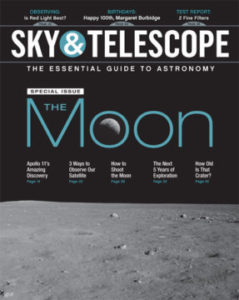 |
From Sky & Telescope magazine, Philip Hiscock’s Once in a Blue Moon and What Is a Blue Moon? by Roger Sinnott, Donald Olson, and Richard Flenberg discuss the folklore and science of blue moons. |
| From Science@NASA, Blue Moon has more info on colorful moons (and lavender suns). | |
 |
Aurelia and Blue Moon are hypothetical worlds invented by astrophysicists on which alternative lifeforms could develop. The low-gravity world of the Blue Moon, for example, features giant “pagoda trees” that grow half a mile high, balloon plants, manta-ray-like kites, and skywhales. |
MOON STORIES AND RASPBERRY TARTS
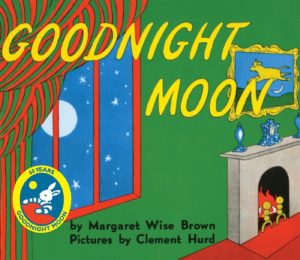
|
The moon in Margaret Wise Brown’s classic Goodnight Moon (HarperCollins, 2005) is in a picture on the wall in the great green room where a very small rabbit is going to sleep. A bedtime tradition since 1947. |
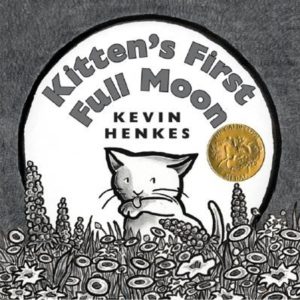
|
In Kevin Henkes’s, Kitten’s First Full Moon (Greenwillow Books, 2004), Kitten is convinced that the moon is a bowl of milk in the sky and is determined to get it. She fails time and again (“Poor Kitten!”) and finally tumbles into a pond chasing the moon’s reflection. Wet, tired, and hungry, Kitten returns home – to find a comforting bowl of milk waiting for her on the porch. For ages 2-5. |
| Follow along in a reading of Kitten’s First Full Moon on You Tube. | |
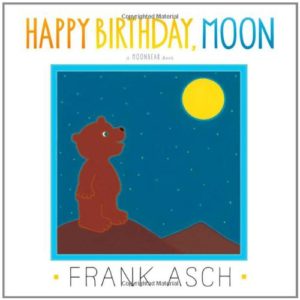
|
The huggable Bear of Frank Asch’s Happy Birthday, Moon (Aladdin, 2000) wants to give the moon a birthday present. He climbs a tree and a mountain, trying to chat with the moon, and finally discovers that the moon’s birthday is the same as his own. In fact, they even want the same present. Sequels featuring Bear and the moon include Mooncake and Moongame. For ages 3-7. |
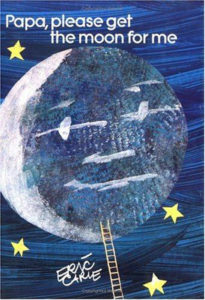 |
In Eric Carle’s gorgeously illustrated Papa, Please Get the Moon for Me(Simon & Schuster Books for Young Readers, 1991), the moon looks so close that Monica wants to reach up and play with it – but still it’s much too far away. And so she asks, “Papa, please get the moon for me.”
With the help of a very tall mountain and a very long ladder, Papa tries, but when he reaches the moon he finds it much too large to carry. He waits patiently, however, and day by day the moon grows smaller until it’s just the right size to pick up. Monica has a wonderful time playing with the moon – until finally it grows so small that it floats back up to the sky and disappears. Some nights later, though, it reappears in Monica’s bedroom window, as beautiful as ever. A lovely story with wonderful fold-out pages (to accommodate a very long ladder) for ages 3-8. |
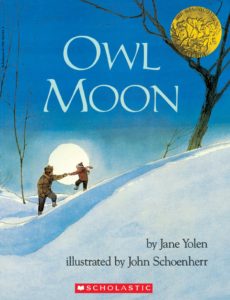
|
In Jane Yolen’s Owl Moon (Philomel, 1987), a little girl and her father go owling on a moonlit winter night. They walk through snow in the woods, hidden animals watching them pass, until they come to a clearing where the father gives an owl call – and a magnificent owl swoops down from the sky. A simple magical story for ages 3-8. |
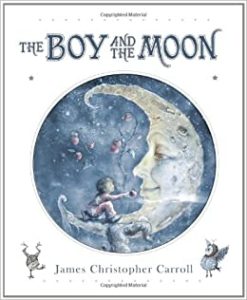
|
In James Christopher Carroll’s glowingly illustrated The Boy and the Moon (Sleeping Bear Press, 2010), a little boy with a teddy bear and a host of animal companions run out into the night for an exuberant moonlit romp – until the moon gets stuck in the branches of an apple tree. Luckily the boy comes up with a clever scheme for rolling it free and sending it back to the sky. A beautiful read for ages 3-7. |
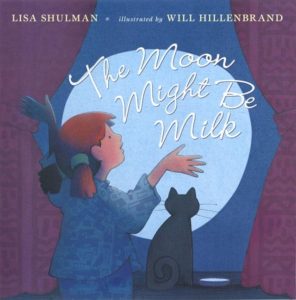
|
Though traditionally the moon is said to be made of green cheese, when Rosie inquires in Lisa Shulman’s The Moon Might be Milk (Dutton Juvenile Books, 2007), the local animals all have other ideas. Cat thinks it’s a saucer of milk; Hen opts for an egg; Dog says butter; Butterfly, sugar; and Mouse, flour. Finally all arrive at Rosie’s grandmother’s house, where Gran combines all the guesses to cook up a batch of moon-shaped cookies. A recipe for Gran’s Sugar Cookie Moons is included. For ages 3-8. |
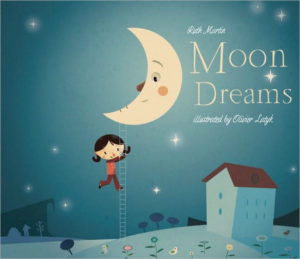
|
What happens to the moon in the daytime? In Ruth Martin’s Moon Dreams (Templar Publishing, 2010), Luna (who was born under a full moon) and her toy bunny explore a number of possibilities. Perhaps the moon dives into the sea (Luna and bunny investigate in a bathyscaphe) or hides in the mountains or slips behind the clouds. Ultimately the moon confides that it’s always right there in the sky, watching over Luna all the time. For ages 3-6. |
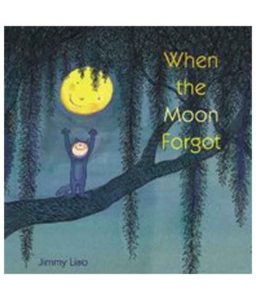
|
In Jimmy Liao’s charmingly illustrated When the Moon Forgot (Little, Brown Books for Young Readers, 2009), the moon disappears, and when it does the sky darkens, the tides stop, and factories begin manufacturing artificial moons to make up for the loss. In the meantime, a little boy has rescued the moon, which has fallen to earth and landed in a pond. The moon is small, sick, and confused – it can’t remember where it came from – so the boy tends it, and together they explore, play, and become friends. Finally the artificial moons begin to fade and blink out – people toss them away and they pile up on street corners – and at last the moon remembers where it belongs. Sadly the two friends part – but from then on the boy’s dreams are always filled with moonlight. For ages 5-10. |
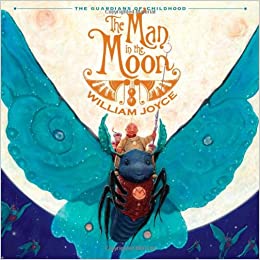
|
In the Guardians of Childhood series, William Joyce’s The Man in the Moon (Atheneum Books for Young Readers, 2011) is the magnificently illustrated tale of the Man in the Moon – who, it turns out, wasn’t always a Man and wasn’t always on the Moon. As a child, the Man in the Moon (MiM) travels through space with his parents in the Moon Clipper, a gorgeous spherical spaceship. Then Pitch, King of Nightmares, moves in, determined to capture MiM. A battle ensues, in which MiM’s parents and his caretaker, Nightlight, are lost, after which Mim takes up residence on the moon. There, determined to protect the hopes and dreams of children on Earth, he becomes a Guardian of Childhood, along with his allies: a toymaker, a rabbit with a passion for candy eggs, a fairy who leaves prizes under pillows, a storyteller, and a sleepy little man with a love for dreams. Not to be missed. For ages 6 and up. |
| The Man in the Moon is a beautifully illustrated activity book of puzzles and projects to accompany the book. | |
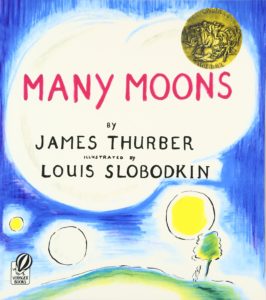
|
In James Thurber’s Many Moons (Sandpiper, 1998) – my favorite moon book of all time – the little Princess Lenore, sick from a surfeit of raspberry tarts, refuses to get well until she’s given the moon. The king’s advisors all fail to help (“Nobody can get the moon,” said the Royal Wizard. “It is 150,000 miles away, and it is made of green cheese, and it is twice as big as the palace.”) Finally the wise Court Jester, with a little help from the princess herself, solves the problem. A delight for all ages. |
| Bake a batch of raspberry tarts! |
